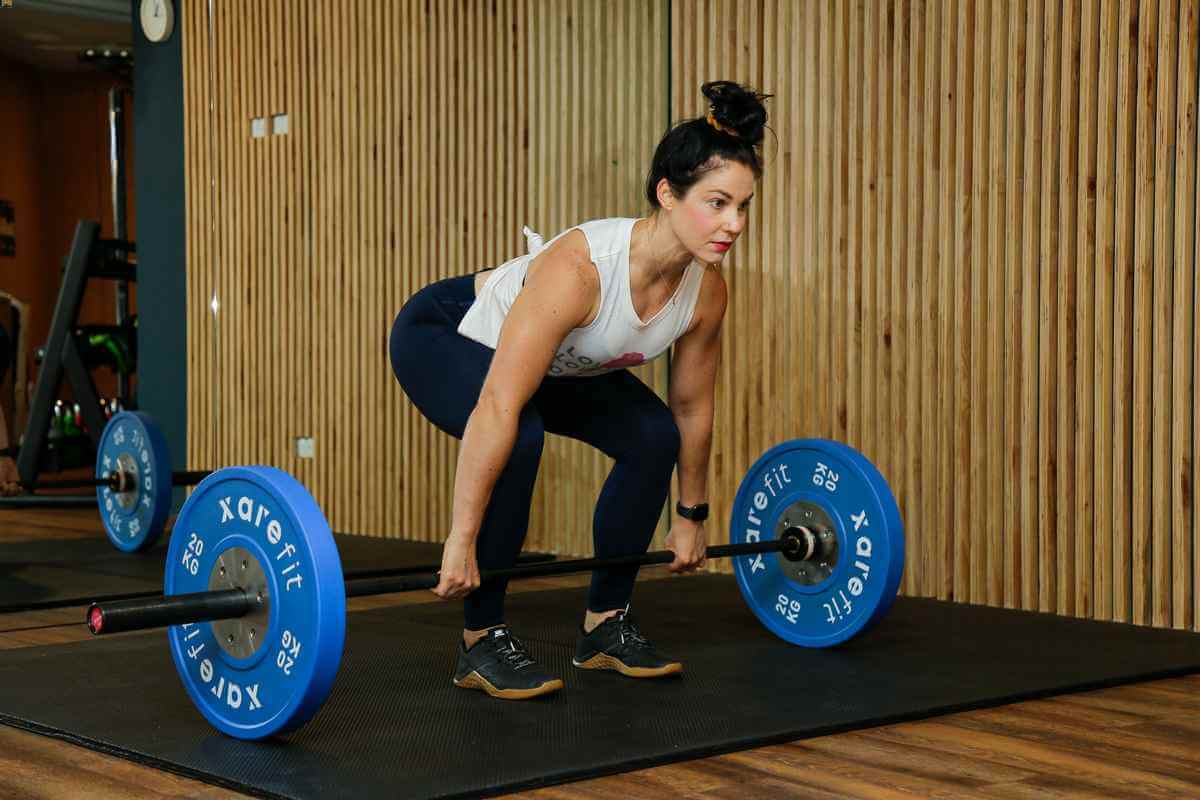The best fitness tool you didn’t know you had

With all the ‘shoulds’ hurled at us every day in the fitness industry and on social media, there’s one thing we do know to be true: when we know more about our body WE become the rule-makers for our own health.
Your menstrual cycle is a brilliant built-in system that can help do just this.
Everyone has life stress. As women, we not only have to deal with life stress but also daily and weekly hormonal fluctuations. The more information you have about your body, the better you can manage mental and physiological stress to get the most out of exercise.
For too long women have been shamed into silence with their periods. It’s not a sign of weakness. It is a natural rhythm and flow for our life. You never have to suffer in silence with it or ‘harden up’. By understanding more you can use it to enhance your fitness pursuits!
We can’t have a conversation about exercise and your cycle until you understand your own.
If you aren’t already, start tracking. You can do this through a number of apps to keep things easy and in one place, like:
- FitrWomen
- Flo Period & Ovulation
- Clue
The cycle
There are two main hormones that women experience a shift in over the month: estrogen and progesterone. They are like best friends and affect most processes in the body. The two phases of the cycle are:
- Follicular phase: This is the low hormone phase that begins with menstruation and ends with ovulation.
- Luteal phase: This is the high hormone phase that ends with PMS.
The whole cycle can go between 21-40 days depending on the individual. To make things easy, the cycle is usually referred to as 28 days (it’s just easier to box it into a ‘month’).
How does this affect your exercise?
Just like you, the menstrual cycle is complex. Understanding it means we can use it to our advantage. We can develop more self compassion with the context of why some days feel harder, and why some days we feel on fire!
Follicular phase (days 1-7)
What’s happening? Day one of this phase is the first day of your bleed (which can last 5-6 days). Your body is primarily using glycogen (carbohydrates) as energy and progesterone and estrogen are at an all time low.
Exercise: Having your period definitely doesn’t mean it is a weak week and you should stop exercise—quite the opposite! You might find that after the first 1-2 days of your period your energy is up, you have a better ability to handle ‘pain’ and you can go a little harder for a little longer with less fatigue. Use this time to work on increasing weights (go for higher weight, lower reps) and work at higher intensity.
Caveat: make sure your recovery is in check! As a busy mum, you can only exercise as hard as life will allow so take stock of as much rest and recovery as you can to make the most out of these two weeks to get some good adaptation.
Late follicular (days 8-14)
What’s happening? Once your period stops, estrogen begins to rise to prepare for ovulation. Your body is starting to switch from using glycogen as energy to using more fat for energy. What this means is it could be a little hard to reach those top-end intensities but you may have an improved mood and feel good!
Exercise: If you do find you are a little weary around ovulation, you might be feeling ready for exercise around 36 hours afterwards. This is when you can make the most of the brilliant qualities estrogen offers as being a blunter of pain receptors and go for PRs! If you feel good go for a little more volume in the gym with weights (a great phase for building muscle) and get in some longer distance aerobic exercise.
Luteal phase (days 15-28)
What’s happening? Progesterone and estrogen rise and PMS happens around 5 days before your next bleed. Progesterone changes our metabolism, can cause us to feel overheated, more fatigued, have perturbed sleep and less energy. If you’re starving during this time you are not crazy—your body is working hard with the change in metabolic processes. Prioritise protein as your body will need more for recovery and repair.
Exercise: There is a decreased ability to take carbohydrates from the body to use for exercise, which is why things might feel harder and heavier than the weeks prior. Don’t be afraid to eat a little more, especially carbohydrates to help boost your exercise. PMS week is a perfect time to go into a deload phase. This could look like a walk or some yoga or if you are lifting weights, go for higher repetitions but lower weight. This is also a great time to work on skills like running drills or honing movement patterns to prepare your body to move well when it comes to the follicular phase again!
Like everything, we have principles but we also have context. This goes for your menstrual cycle too! You might feel great in your PMS week, you might feel terrible in your period week. Allow there to be shifts within the principles and take into account everything else in life that’s affecting how you feel.
Our cycle is our friend, not our foe! It is a tool – not a punishment. We are unique and capable of great things. Use the knowledge you have around your unique cycle and your body to enhance your exercise as a way for you to feel more optimal in your life.
Olivia is a women’s health and performance coach who helps women find liberation from the ‘shoulds’ of the fitness industry and the all-or-nothing mindset through training with intention and intensity. To find out more about her or get in touch, click here.
